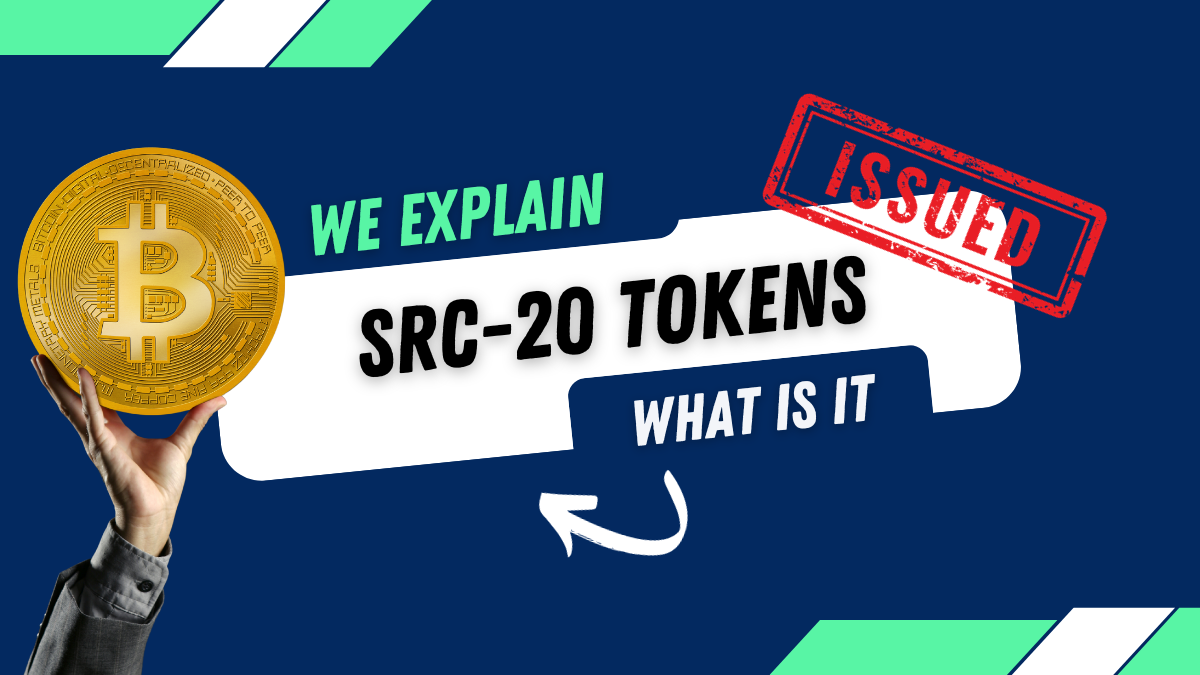Cryptocurrency is always evolving, and SRC-20 tokens are the latest buzz in the world of Bitcoin. These tokens are like the special ingredients that add new powers to Bitcoin, especially when it comes to something called Bitcoin Stamps.
Getting to Know SRC-20 Tokens
SRC-20 tokens, a defining standard in the realm of Bitcoin Stamps, have sparked considerable interest recently. These tokens serve as the backbone of a protocol geared towards securely embedding data within Bitcoin transactions, much like the functionality offered by the BRC-20 standard.
However, the methodologies employed by these protocols exhibit distinct approaches to data embedding, setting them apart in their applications within the Bitcoin network.
Termed as “Bitcoin’s nonfungible tokens (NFTs),” Bitcoin Stamps draw inspiration from Counterparty, a peer-to-peer platform built upon Bitcoin.
Additionally, the lineage of this platform traces back to the concept of colored coins, an attempt to distinguish specific Bitcoin units by incorporating additional metadata. Although colored coins didn’t take off independently, they laid the groundwork for more advanced technologies like BRC-20 and subsequently, SRC-20.
Similar to how ERC-20 tokens operate on Ethereum, SRC-20 tokens enable users to create tokens on the Bitcoin blockchain. Originally designed to foster a decentralized financial system and wrest control from financial elites, Bitcoin has seen its utility expand through innovations like Ordinals and SRC-20 tokens. These advancements have transformed Bitcoin from a mere store of value into a platform accommodating diverse use cases. However, some critics argue that tokenization may deviate Bitcoin from Satoshi Nakamoto’s original vision.
SRC-20 tokens, named in resonance with the famed ERC-20 and BRC-20 standards, signify a new chapter in Bitcoin’s journey by unlocking innovative possibilities within its blockchain.
The Journey to SRC-20 Tokens
SRC-20 tokens didn’t just pop out of nowhere.
The evolution of SRC-20 tokens finds its roots in colored coins—a concept aimed at tagging certain Bitcoin units with unique metadata. Although this concept didn’t fully take flight, it laid the groundwork for subsequent protocols like BRC-20 and the more recent SRC-20 tokens.
Ordinals, pioneered by Casey Rodarmor in January 2023, introduced a protocol facilitating the inscription of digital content onto the Bitcoin blockchain. This initiative aimed to create an immutable on-chain presence for digital content akin to Ethereum-based NFT experiences.
Built on the BRC-20 standard, Ordinals provide individual identities to satoshis, enabling the storage of digital content within these units. This differs significantly from Ethereum’s method of using smart contracts for minting NFTs. Ordinals embed JSON data into their inscriptions, paving the way for tokens like ORDI, MEME, VMPX, PEPE, and BANK, which gained popularity post their introduction in March 2023.
How SRC-20 Stands Out from BRC-20
While BRC-20 tokens already did a lot for Bitcoin, SRC-20 tokens bring something extra special. Stamps, conceptualized by Twitter user Mike In Space, enable direct data storage, including text and images, through UTXOs within Bitcoin transactions. Unlike BRC-20s and Ordinals, where metadata can be tampered with, Stamps ensure permanent blockchain storage, resistant to pruning.
To delve into further detail, Stamps use the Counterparty protocol, an open-source P2P protocol built atop the Bitcoin blockchain in 2014. The protocol utilizes various methods, including the “OP_Return” function for smaller data storage and multi-sig across multiple outputs for larger files.
Exploring SRC-20 Tokens Step-by-Step
For those curious about SRC-20 tokens, the process of acquiring them involves navigating through platforms like stampsrc.github.io and stampchain.io/src20. Using tools like the Hiro Wallet as a browser extension allows users to engage in Bitcoin-based apps and mint SRC-20 tokens. The minting process involves intricate steps to acquire SRC-20 tokens, providing users with a deeper understanding of how these tokens function within the Bitcoin ecosystem.
The Future of SRC-20 Tokens
Stamps, despite being in their infancy, hint at promising developments aimed at enhancing efficiency within the ecosystem. However, the path ahead for SRC-20 tokens, particularly Stamps, might face resistance from purists in the Bitcoin community. This resistance may lead to debates on maintaining the genesis blockchain’s original essence versus adapting to new innovations, potentially causing a split within the community.
As Stamps and SRC-20 tokens pave the way for novel use cases within Bitcoin, ongoing developments are expected to shape the future landscape of blockchain technology. These advancements not only unlock new functionalities but also stir debates around the fundamental nature of the Bitcoin network and its role in the wider crypto space.
